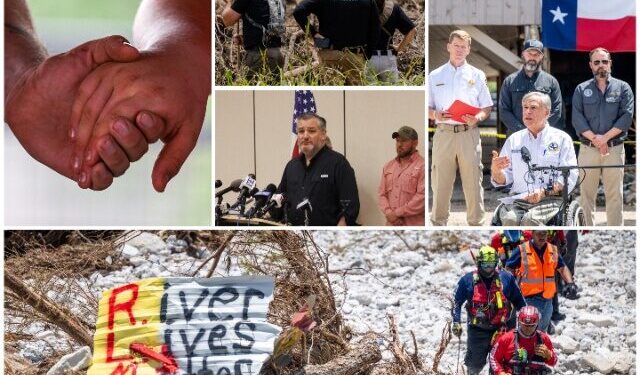As search and rescue crews continue working around the clock in the aftermath of the deadly Independence Day flood in Kerrville, Texas, some in the media are using the disaster to push a narrative—one that casts doubt, spreads blame, and distracts from the urgent mission at hand.
The Texas Tribune, in a headline that feels more like an accusation than a news report, declared: “Weather warnings gave officials a 3 hour, 21 minute window to save lives in Kerr County. What happened then remains unclear.”
From the start, this framing suggests local officials were sitting on their hands during a life-or-death situation—despite no actual evidence of such inaction. In truth, this piece, written by a climate reporter, offers far more questions than answers and lacks a single confirmed misstep by those coordinating the emergency response.
While officials have been front-facing and professional in press briefings—focusing on the urgent needs of the missing, the injured, and the grieving—the Tribune seems more concerned with pinning blame than telling the full story. Their article openly complains that Kerrville’s city manager won’t answer “the most concerning questions” and that officials are focused instead on the ongoing rescue effort.
Let’s be clear: that “focus” is exactly what residents need. Fishing for political scandal while first responders comb the banks of the Guadalupe River is not journalism—it’s opportunism.
It’s worth noting the timing of the flood. The National Weather Service issued a flash flood warning at 1:14 a.m. on July 4—when most people were asleep, phones silenced, and campgrounds packed with holiday travelers. The Tribune implies that local officials had over three hours to act, but those hours were pre-dawn and chaotic. Alerts did go out, but as past flood reports have shown, nighttime events are historically far more dangerous. A 1999 FEMA-backed report on a similar Guadalupe Basin flood in 1998 highlighted how the daytime timing of that flood kept the death toll lower. Had it occurred at night—as this one did—the authors warned, the consequences would have been far worse.
And they were.
Instead of focusing on the human cost, or the broader lessons of flood history in the Texas Hill Country, the Tribune seemed eager to cast suspicion on small-town officials in the middle of a national holiday disaster. Meanwhile, federal and local teams are working tirelessly to find survivors—many of them children—along with families, campers, and out-of-town visitors.
By twisting a developing emergency into a political commentary on alleged climate inaction or bureaucratic failure, activist reporters risk damaging public trust at the exact moment it’s needed most.
Let’s not forget the basics: nature is unpredictable, weather events often unfold rapidly, and small-town responders often lack the luxury of major metropolitan resources. But what Kerr County officials have shown is resolve, leadership, and a willingness to keep the public informed—even in the face of loss, devastation, and politically motivated media scrutiny.
When tragedy strikes, real leadership looks like boots on the ground—not microphones in press rooms looking to assign blame before all the facts are in.
Let the rescue teams do their job. And let’s hope the media rediscovers theirs.




















